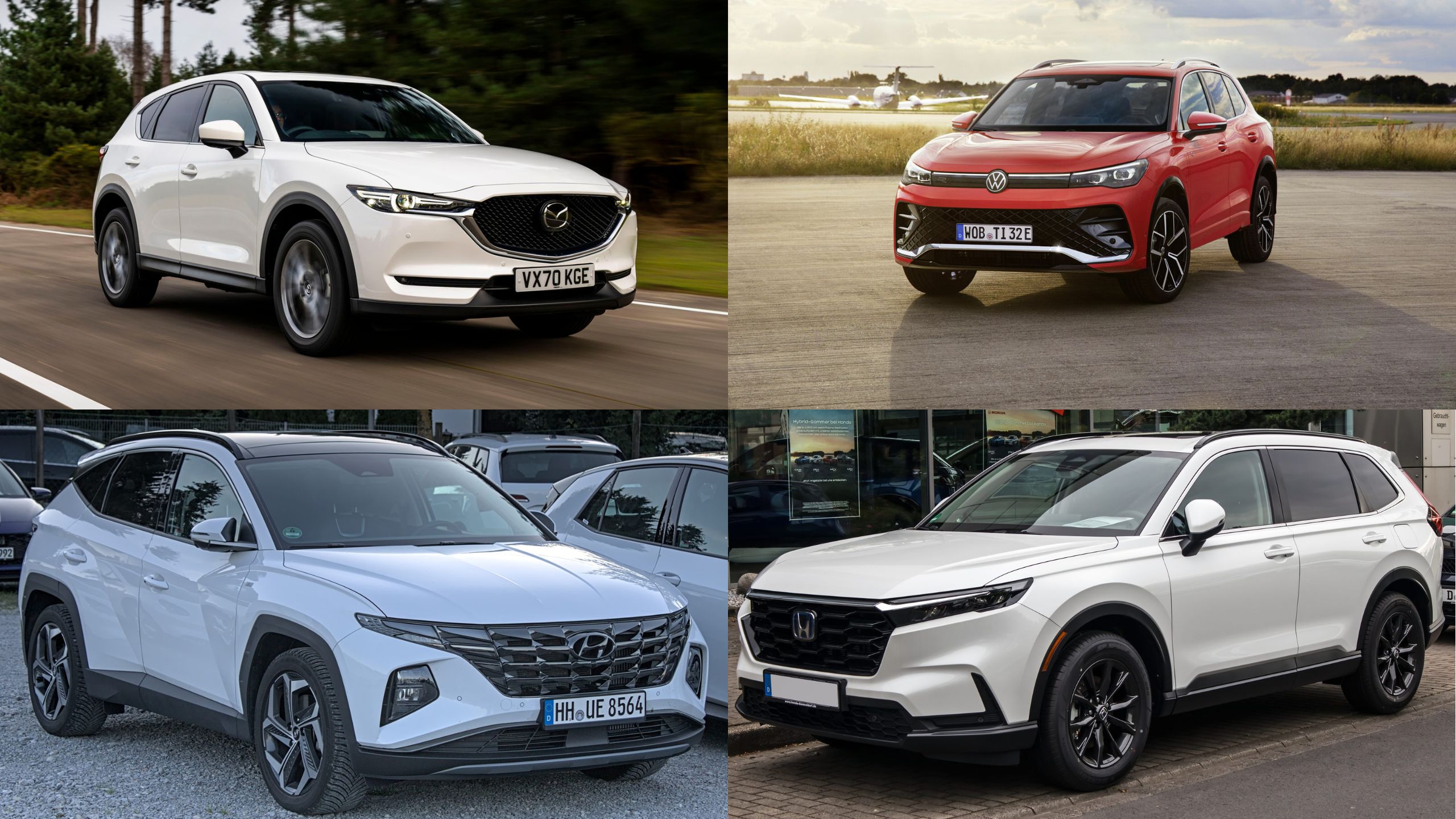The compact SUV segment has become one of the most competitive in the automotive market, combining the versatility and raised driving position of larger SUVs with dimensions more suitable for urban environments.
While these vehicles are categorized as “compact,” many manufacturers have maximized interior space through clever packaging and design. Buyers no longer need to compromise on interior roominess when choosing a smaller footprint vehicle.
Interior space encompasses not just passenger rooms across both rows, but also cargo capacity, storage solutions, and a feeling of openness.
The most impressive compact SUVs offer generous headroom, legroom, and shoulder room for all occupants, along with flexible seating arrangements that can accommodate varying combinations of passengers and cargo.
Additionally, thoughtful ergonomics, high-quality materials, and intelligent storage solutions contribute significantly to the perception of spaciousness.
This comparison examines twelve compact SUVs that stand out for their exceptional interior dimensions, practical layouts, and spatial efficiency, helping potential buyers identify which models offer the best balance of compact exterior dimensions and generous interior accommodations.
1. Honda CR-V
The Honda CR-V has long been a benchmark in the compact SUV segment for interior spaciousness, and the latest generation continues this tradition. With a total passenger volume of 105.9 cubic feet, the CR-V offers exceptional room for both front and rear passengers.
Front-row occupants enjoy 41.3 inches of legroom and 40.1 inches of headroom, while rear passengers benefit from a class-leading 41.0 inches of legroom and 39.1 inches of headroom, making it one of the few compact SUVs that can comfortably accommodate tall adults in both rows.
Behind the second row, the CR-V provides 39.3 cubic feet of cargo space, expanding to an impressive 76.5 cubic feet with the rear seats folded. Honda’s thoughtful design includes a low load floor and wide opening that simplifies loading bulky items. The rear seats feature a 60/40 split and can be folded nearly flat with a single pull of levers accessible from the cargo area.
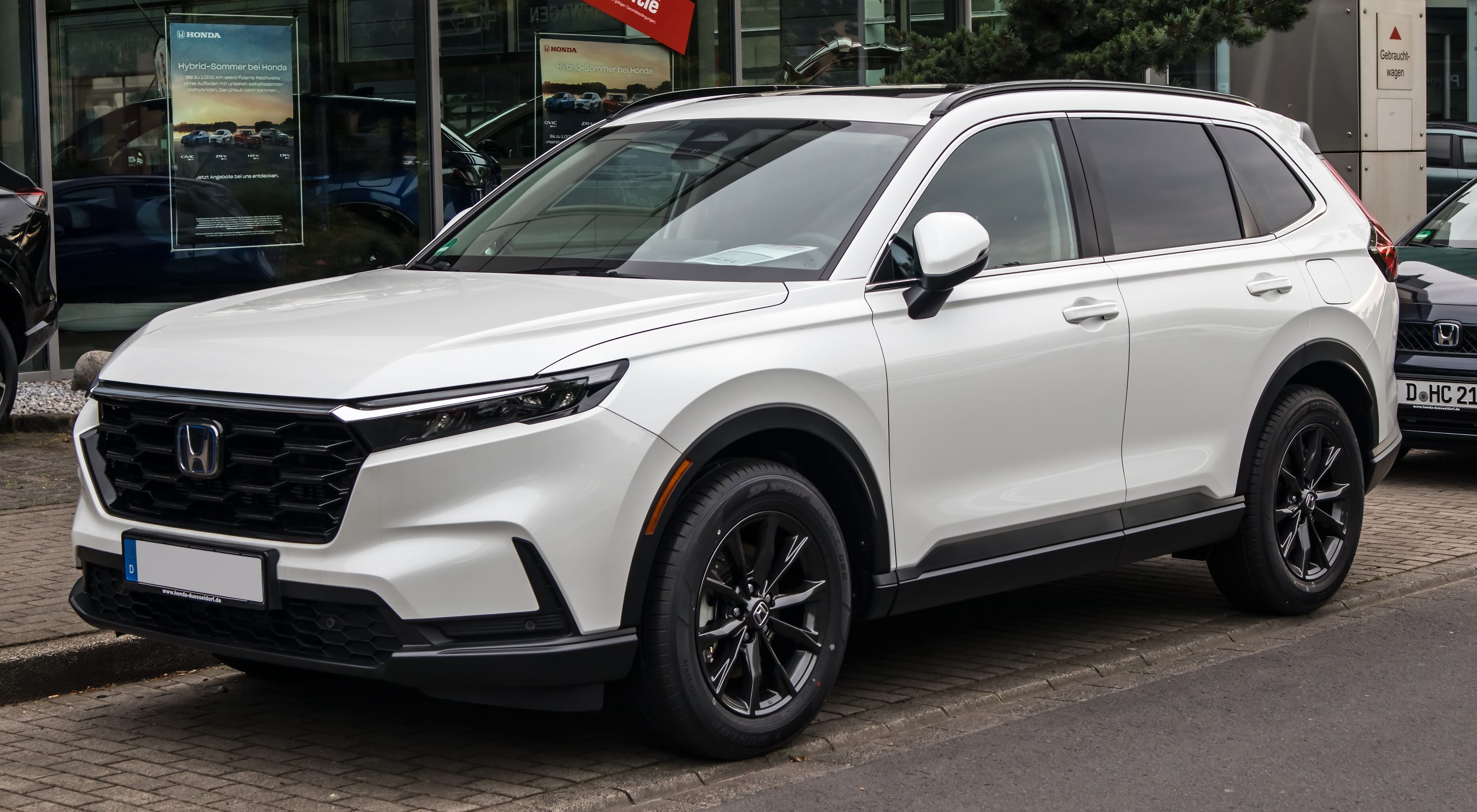
The CR-V’s cabin is enhanced by numerous storage solutions, including a reconfigurable center console that can accommodate items of various sizes, from smartphones to small bags.
Door pockets are generously sized, and the front passenger area includes smart storage options for everyday items. Higher trim levels incorporate premium materials and sound insulation that create a more refined atmosphere without compromising space.
Honda has achieved this spacious interior while maintaining relatively compact exterior dimensions, with a length of 184.8 inches and a width of 73.5 inches.
The vehicle’s efficient packaging reflects Honda’s engineering philosophy of maximizing interior space, with nearly 80% of the CR-V’s total volume dedicated to passengers and cargo.
This efficiency, combined with excellent visibility from all seating positions, delivers an open, airy cabin experience that consistently ranks among the most comfortable in its class.
2. Toyota RAV4
As one of the pioneers of the compact SUV segment, the Toyota RAV4 has evolved to offer one of the most spacious and versatile interiors in its class.
The current RAV4 provides 98.9 cubic feet of passenger volume, with thoughtful packaging that maximizes usable space. Front-row occupants enjoy 41.0 inches of legroom and 37.7 inches of headroom, while rear passengers benefit from 37.8 inches of legroom and 39.5 inches of headroom.
Where the RAV4 particularly excels is in cargo capacity, offering 37.6 cubic feet behind the rear seats and an expansive 69.8 cubic feet with the second row folded.
The cargo area features a reversible floor panel that can be positioned to accommodate taller items or create a flat load surface when the rear seats are folded. The 60/40-split rear seats can be quickly reconfigured via convenient levers in the cargo area, and select trims offer power-operated liftgates with height adjustment.
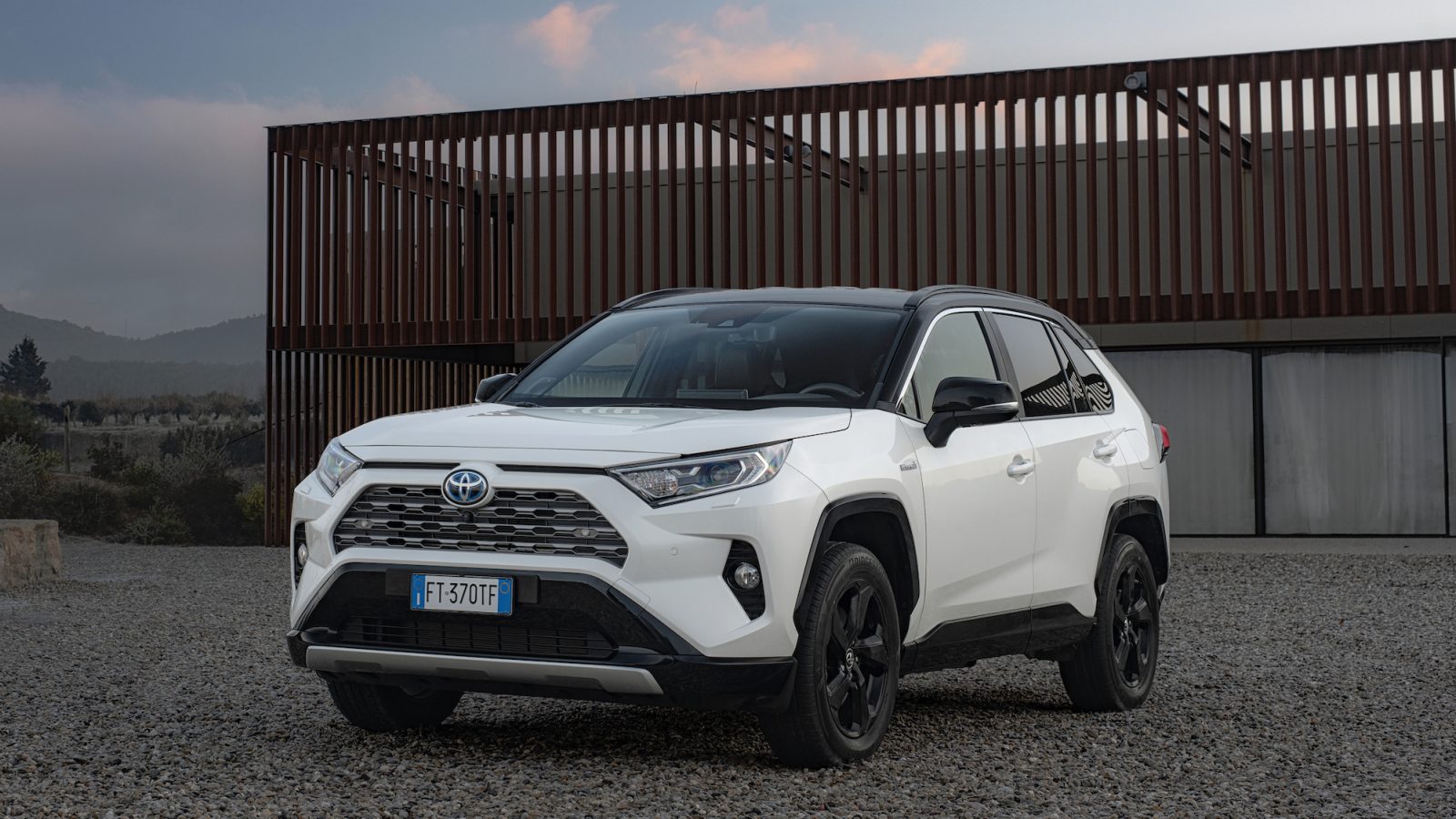
Toyota has incorporated numerous practical storage solutions throughout the cabin, including a spacious center console bin, large door pockets with dedicated bottle holders, multiple cup holders, and a shelf integrated into the dashboard that provides a convenient place for small items.
Higher trim levels add premium touches like synthetic leather upholstery and soft-touch materials that enhance the perception of spaciousness through their upscale aesthetic.
The RAV4’s interior benefits from a thoughtful layout that emphasizes accessibility and comfort. The wide-opening doors facilitate easy entry and exit, while the raised seating position provides excellent visibility.
The dashboard is positioned to maximize the feeling of openness while keeping controls within easy reach. Toyota’s attention to detail extends to the climate control system, which includes rear air vents on most trims to ensure comfort for all passengers.
Despite offering generous interior accommodations, the RAV4 maintains manageable exterior dimensions, with a length of 180.9 inches and a width of 73.0 inches. This makes it easy to maneuver in urban environments while still providing the space and versatility that compact SUV buyers prioritize.
3. Hyundai Tucson
The redesigned Hyundai Tucson has made significant strides in interior spaciousness, now ranking among the most accommodating in the compact SUV segment.
With a total passenger volume of 108.2 cubic feet, the Tucson exceeds many competitors, including some nominally larger models. The front row provides 41.4 inches of legroom and 40.1 inches of headroom, while rear passengers enjoy 41.3 inches of legroom and 39.5 inches of headroom, figures that are exceptional for this class.
Cargo capacity impresses with 38.7 cubic feet available behind the rear seats, expanding to 74.8 cubic feet with the rear seats folded.
The Tucson’s cargo area features a wide opening and low lift-over height, simplifying the loading of bulky items. The rear seats split in a 60/40 configuration and fold nearly flat, maximizing versatility.
Select trims offer a hands-free power liftgate that can be customized to open to specific heights, accommodating users of different statures or garages with low ceilings.
Hyundai has enhanced the perception of spaciousness in the Tucson through thoughtful design elements. The horizontally oriented dashboard creates a sense of width, while the floating center console provides practical storage and visual lightness.
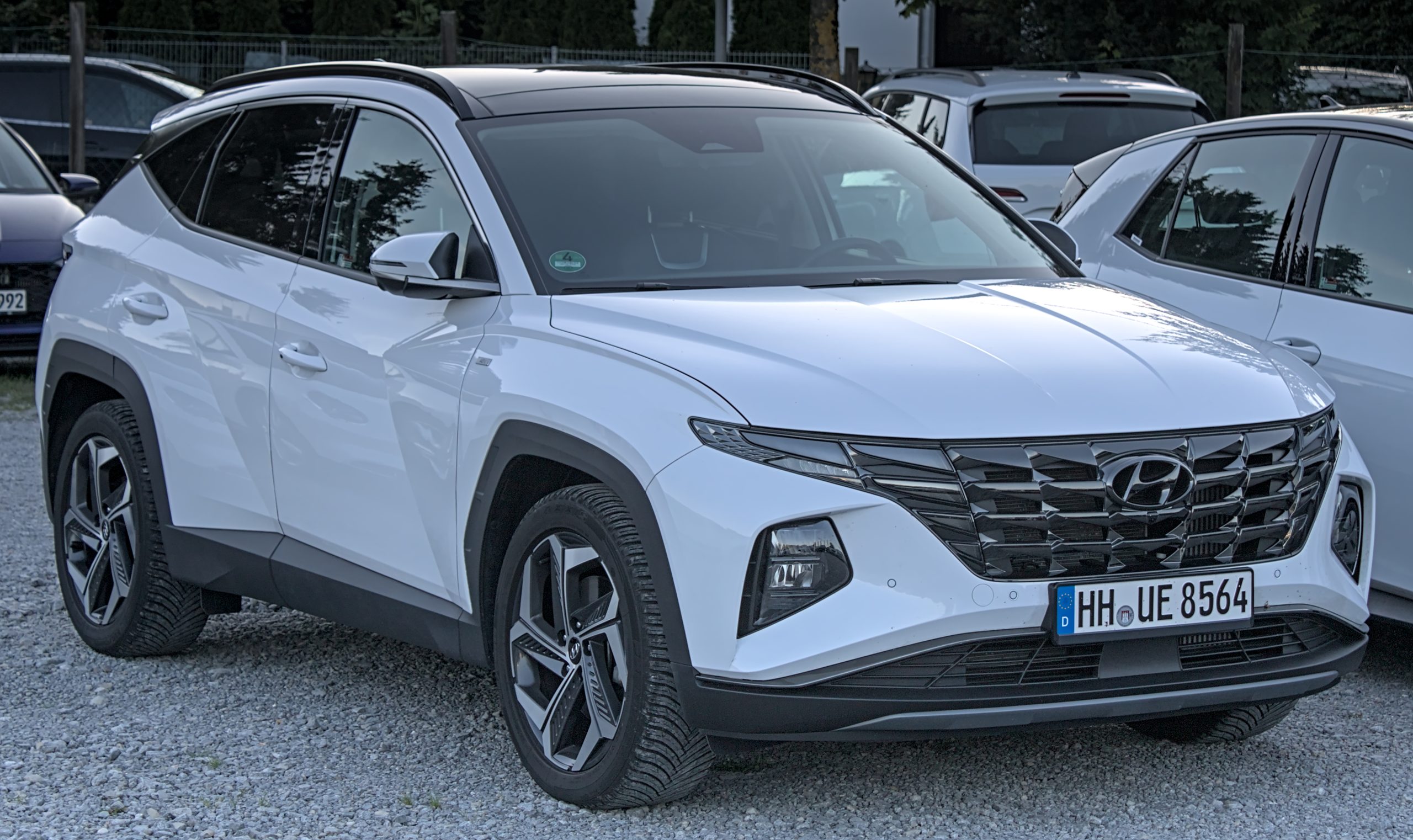
Ambient lighting on upper trims further accentuates the cabin’s dimensions after dark. Storage options are abundant, including a large center console bin, sizable door pockets, multiple cup holders, and clever smaller compartments for everyday items.
The Tucson distinguishes itself with premium touches not typically found in compact SUVs. Higher trims feature leather upholstery, ventilated front seats, and heated rear seats, raising the experience for all occupants.
The panoramic sunroof, available on most versions, dramatically increases the sense of airiness and light throughout the cabin. Hyundai has achieved this impressive interior volume while keeping Tucson’s exterior dimensions manageable at 182.3 inches in length and 73.4 inches in width.
This efficient packaging, combined with the model’s refined materials and thoughtful ergonomics, creates an interior environment that feels a class above many competitors, making the Tucson an excellent choice for buyers prioritizing spaciousness in a compact footprint.
4. Mazda CX-5
The Mazda CX-5 takes a unique approach to interior spaciousness, focusing on premium materials and thoughtful ergonomics to create a cabin that feels substantial despite offering slightly more modest measurements than some competitors.
With 103.6 cubic feet of passenger volume, the CX-5 provides front occupants with 41.0 inches of legroom and 39.7 inches of headroom, while rear passengers receive 39.6 inches of legroom and 39.0 inches of headroom.
Where the CX-5 particularly stands out is in its interior width, offering generous shoulder room that contributes significantly to comfort on longer journeys.
The cargo area provides 30.9 cubic feet behind the rear seats and 59.6 cubic feet with the seats folded. While these figures are not class-leading, Mazda has designed the space to be highly usable, with a wide opening, minimal intrusions, and a 40/20/40 split-folding rear seat that offers more flexibility than the typical 60/40 arrangement found in most competitors.
Mazda has raised the perception of space through premium design and materials that create an upscale atmosphere. The horizontal dashboard layout emphasizes width, while carefully placed trim elements draw the eye around the cabin.
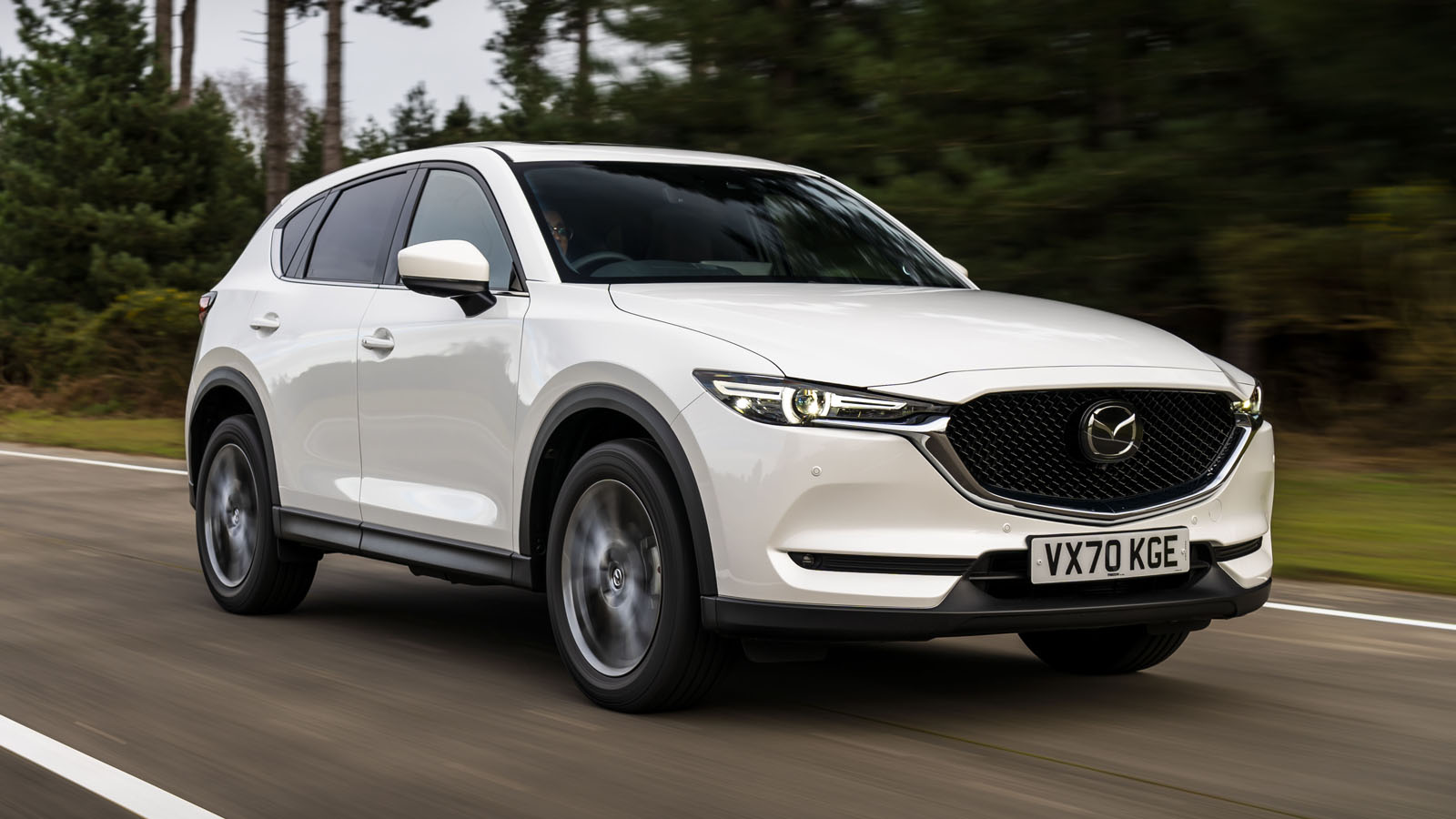
Upper trim levels feature genuine wood accents, Nappa leather, and soft-touch materials throughout, creating an environment more commonly associated with luxury brands. Even base models benefit from Mazda’s focus on refinement, with quality materials in all touch points.
The CX-5’s cabin layout emphasizes driver-centric ergonomics without compromising passenger comfort. Controls are intuitively positioned, and the driving position can be precisely adjusted to accommodate a wide range of body types.
Visibility is excellent thanks to relatively thin A-pillars and a commanding seating position. The cabin is exceptionally quiet, with extensive sound insulation that enhances the perception of spaciousness through acoustic comfort.
Storage solutions are thoughtfully integrated, including a center console with sliding armrest, sizable door pockets, and cleverly placed smaller compartments.
All of these elements combine to create an interior that feels more spacious than its numerical measurements might suggest, making the CX-5 an excellent option for buyers who prioritize quality and comfort over maximum cubic footage.
Also Read: 10 Affordable Cars With Industry-Leading Airbag Systems
5. Subaru Forester
The Subaru Forester has long been known for its exceptional visibility and efficient use of space, making it one of its class’s most practically spacious vehicles.
With 111.9 cubic feet of passenger volume, the Forester ranks among the most accommodating compact SUVs. Front passengers enjoy 43.3 inches of legroom and a generous 41.2 inches of headroom, while rear occupants benefit from 39.4 inches of legroom and 39.6 inches of headroom.
What truly distinguishes the Forester is its exceptional greenhouse with large windows and thin pillars that create an unparalleled sense of openness and visibility.
This design contributes significantly to the perception of space while providing practical benefits for maneuvering and parking. The available panoramic moonroof further enhances this airy feeling, extending over both rows of seating.
Cargo capacity is impressive at 31.1 cubic feet behind the rear seats and 76.1 cubic feet with the seats folded. The Forester features a wide cargo opening and a low load floor that simplifies loading bulky items.
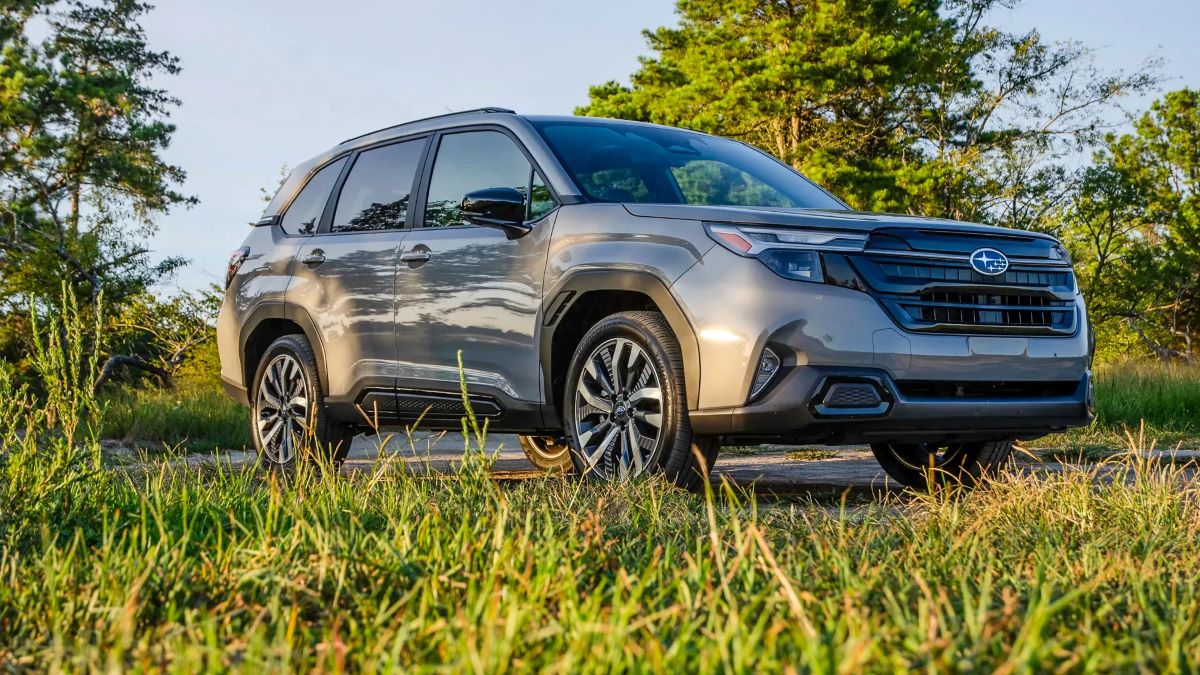
The rear seats offer a 60/40 split and fold nearly flat, creating a versatile space for various cargo configurations. Higher trims include a power liftgate with memory function to customize opening height.
Subaru has designed the Forester’s interior with practicality as a priority, incorporating numerous storage options throughout the cabin.
The center console is generously sized, door pockets easily accommodate large water bottles and thoughtful smaller storage areas are positioned for easy access. The dashboard features a straightforward, horizontal design that enhances the sense of width without compromising functionality.
All Foresters come standard with Subaru’s Symmetrical All-Wheel Drive system, yet this mechanical complexity doesn’t intrude on interior space thanks to efficient packaging.
The vehicle’s boxier exterior design compared to more style-focused competitors directly translates to improved interior volume, demonstrating Subaru’s commitment to prioritizing function.
This practical approach, combined with comfortable seating and excellent visibility, makes the Forester one of the most spatially efficient compact SUVs available, particularly appealing to outdoor enthusiasts who need to maximize cargo and passenger capacity.
6. Volkswagen Tiguan
The Volkswagen Tiguan distinguishes itself in the compact SUV segment by offering an optional third row of seating in front-wheel-drive models, making it one of the few vehicles in its class with seven-passenger capability.
Even in its standard two-row configuration, the Tiguan provides generous accommodations with 101.1 cubic feet of passenger volume.
Front-row occupants enjoy 40.2 inches of legroom and 39.6 inches of headroom, while second-row passengers benefit from a sliding bench that provides up to 38.7 inches of legroom and 39.1 inches of headroom.
Cargo capacity varies by configuration, with two-row models offering 37.6 cubic feet behind the rear seats and an impressive 73.4 cubic feet with seats folded.
Three-row models provide 12 cubic feet behind the third row, 33 cubic feet with the third row folded, and 65.3 cubic feet with all rear seats folded. This flexibility makes the Tiguan exceptionally versatile for families who occasionally need additional seating but don’t want to move up to a midsize SUV.
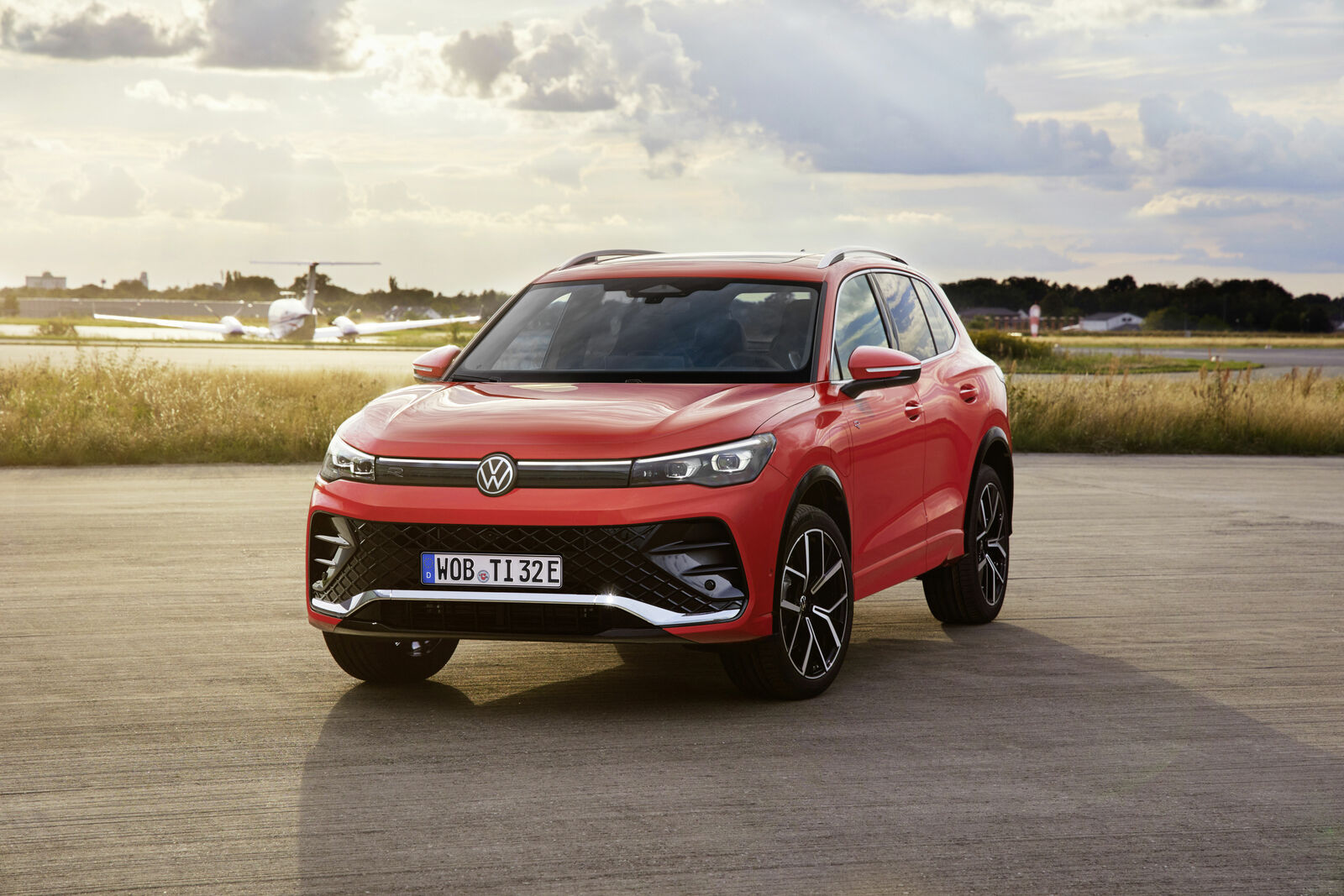
Volkswagen has incorporated numerous thoughtful features that enhance the usability of the Tiguan’s interior. The second row can slide forward and back up to seven inches, allowing owners to prioritize either passenger legroom or cargo space as needed.
All rear seats fold nearly flat, creating a practical load floor for larger items. Higher trims offer a hands-free power liftgate that simplifies loading when hands are full.
The Tiguan’s interior design emphasizes horizontal lines and clean surfaces that maximize the perception of width and spaciousness.
Materials quality is a step above many mainstream competitors, with soft-touch surfaces in key areas and available features like a panoramic sunroof that floods the cabin with natural light.
Storage solutions are abundant and thoughtfully designed, including a deep center console, large door pockets, and multiple smaller compartments for phones and other everyday items.
Despite offering three-row capability and generous interior dimensions, the Tiguan maintains relatively compact exterior proportions with a length of 185.1 inches and a width of 72.4 inches.
This efficient packaging, combined with Volkswagen’s focus on practical versatility, makes the Tiguan an excellent option for growing families who need maximum flexibility from their compact SUV without moving to a larger vehicle class.
7. Kia Sportage
The redesigned Kia Sportage has grown significantly in its latest generation, now offering one of the most spacious interiors in the compact SUV segment.
With a total passenger volume of 108.5 cubic feet, the Sportage provides front passengers with 41.4 inches of legroom and 39.6 inches of headroom, while rear occupants enjoy an impressive 41.3 inches of legroom and 39.4 inches of headroom, dimensions that rival some midsize SUVs.
The Sportage excels in cargo capacity, offering 39.6 cubic feet behind the rear seats and expanding to 74.1 cubic feet with the rear seats folded.
The cargo area features a wide opening, low load floor, and minimal intrusions from wheel wells, maximizing usable space. The rear seats fold in a 60/40 split configuration and create a nearly flat load floor.
Higher trims include a smart power liftgate that automatically opens when the key fob is detected nearby for several seconds, a convenient feature when hands are full. Kia has designed the Sportage’s interior with a focus on both spaciousness and technology integration.
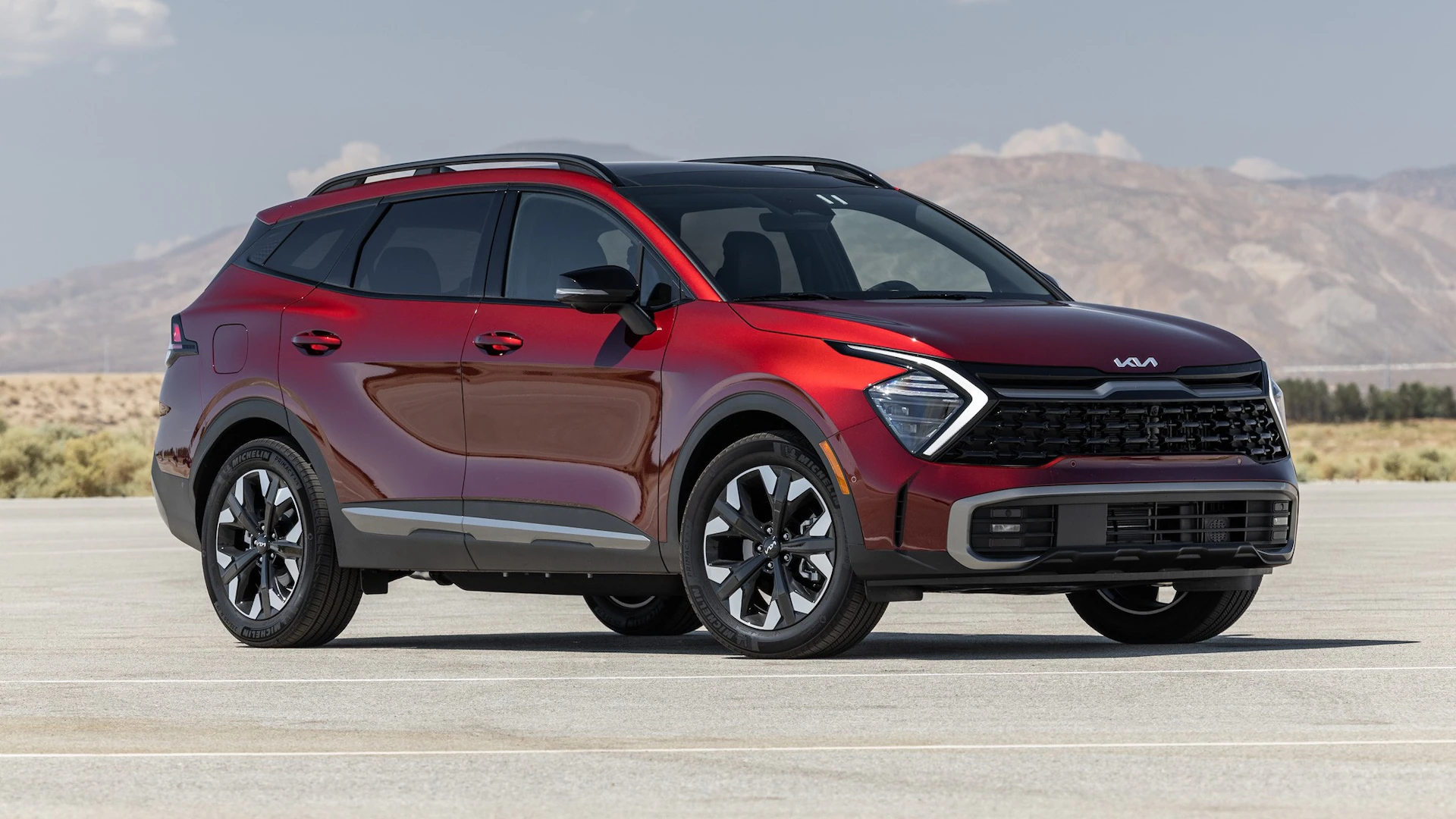
The dashboard features a distinctive curved display that houses both the digital instrument cluster and infotainment touchscreen, creating a high-tech aesthetic without compromising the sense of openness.
This horizontal arrangement visually widens the cabin while keeping essential information and controls easily accessible. The perception of space is enhanced by thoughtful design elements, including slim air vents, a floating center console, and available ambient lighting that accentuates the cabin’s dimensions.
Storage solutions are abundant and well-considered, with a large center console bin, generous door pockets, and clever smaller compartments for everyday items.
Despite its increased interior dimensions, the Sportage maintains reasonable exterior proportions with a length of 183.5 inches and a width of 73.4 inches.
This efficient packaging is particularly impressive considering the Sportage also offers hybrid and plug-in hybrid powertrains without sacrificing interior space.
The combination of generous passenger accommodations, substantial cargo capacity, and thoughtful design details makes the Sportage one of the most spatially efficient vehicles in its class, offering midsize SUV roominess in a compact footprint.
8. Nissan Rogue
The Nissan Rogue demonstrates exceptional interior packaging efficiency, offering one of the most versatile and comfortable cabins in the compact SUV segment.
With 105.4 cubic feet of passenger volume, the Rogue provides front occupants with 41.5 inches of legroom and 41.1 inches of headroom, while rear passengers enjoy 38.5 inches of legroom and 39.2 inches of headroom.
Where the Rogue particularly excels is in its thoughtful approach to interior versatility. The cargo area offers 36.5 cubic feet behind the rear seats and expands to 74.1 cubic feet with the seats folded.
Nissan’s innovative Divide-N-Hide cargo system stands out as a unique feature, providing configurable panels that can create a two-tiered storage solution, hidden compartments for valuable items, or a flat load floor when the rear seats are folded.
This system significantly enhances the practical utility of the available space. The Rogue’s rear doors open to nearly 90 degrees, a seemingly small detail that dramatically improves access for installing child seats or helping older passengers enter and exit.
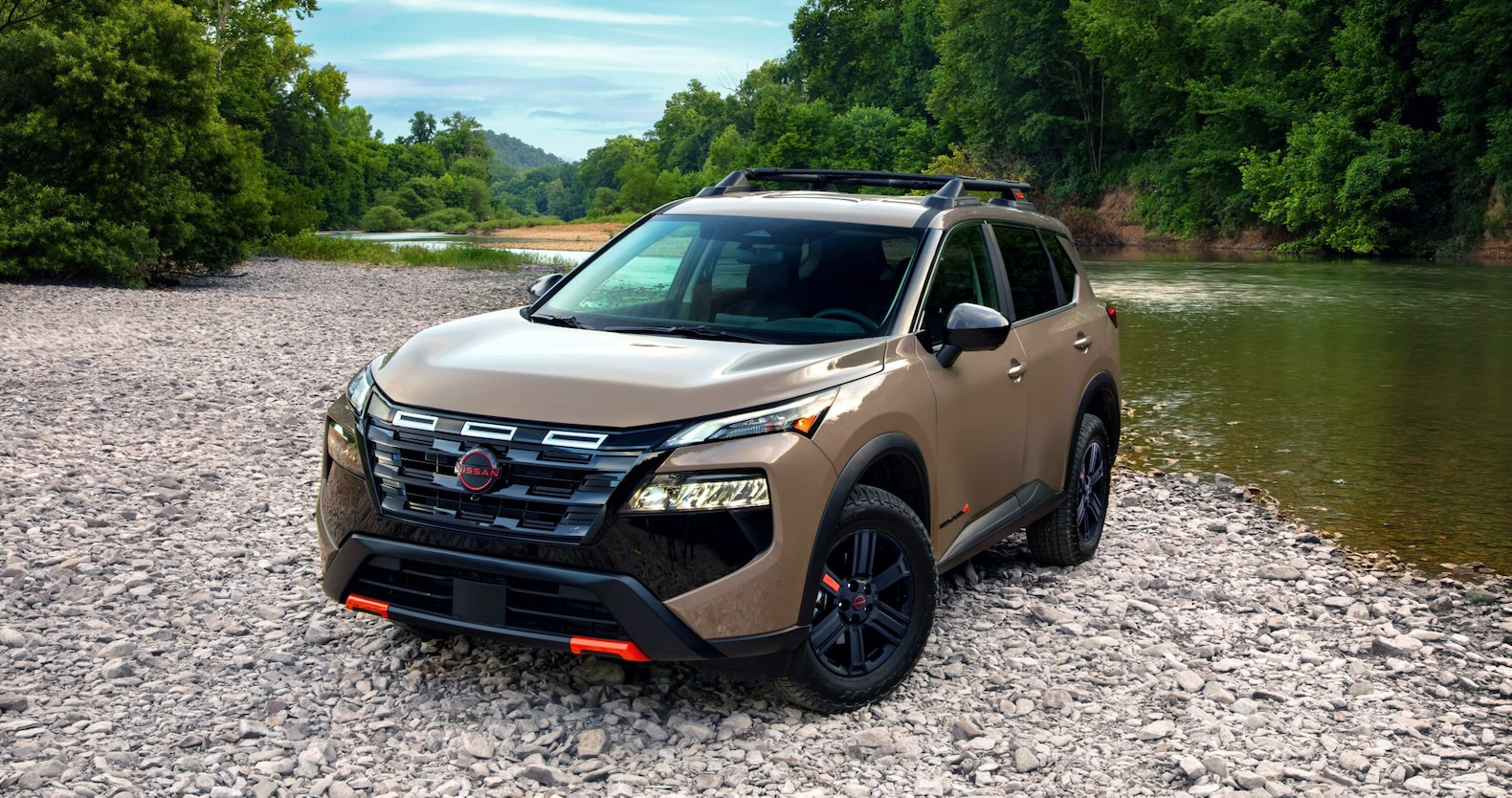
The rear seats feature a 60/40 split configuration, and higher trims include a remote folding function accessible from the cargo area. The available motion-activated liftgate further enhances convenience when approaching the vehicle with full hands.
Nissan has incorporated its Zero Gravity seats in the Rogue, which are specifically designed to reduce fatigue on longer journeys by providing optimal support.
This attention to seating comfort significantly enhances the perception of spaciousness, as passengers remain comfortable even after extended time in the vehicle. The cabin design emphasizes horizontal elements and clean surfaces that visually maximize width and openness.
Storage solutions throughout the cabin are abundant and thoughtfully designed. The center console offers flexible configurations, door pockets are oversized to accommodate larger water bottles, and clever smaller compartments are provided for phones, sunglasses, and other everyday items.
The floating center console design in higher trims creates additional storage space underneath while maintaining a modern aesthetic.
The Rogue achieves its impressive interior accommodations while maintaining compact exterior dimensions, with a length of 183.0 inches and a width of 72.4 inches.
This efficient packaging, combined with Nissan’s focus on versatility and comfort, makes the Rogue one of the most practically spacious options in the compact SUV market.
9. Ford Escape
The Ford Escape offers a distinctively car-like approach to interior packaging, with a focus on passenger comfort that rivals many midsize sedans.
With 104.0 cubic feet of passenger volume, the Escape provides front occupants with 42.4 inches of legroom and 40.0 inches of headroom, while rear passengers benefit from 40.7 inches of legroom and 39.3 inches of headroom when the sliding second row is positioned for maximum passenger space.
This sliding second row is a standout feature of the Escape, allowing owners to prioritize either rear passenger legroom or cargo capacity as needed.
When the seats are moved forward, the cargo area expands to 37.5 cubic feet, and with the rear seats folded, the space increases to 65.4 cubic feet. The load floor is relatively low, facilitating easier loading of heavy items, and the 60/40 split rear seats fold nearly flat to accommodate longer objects.
Ford has designed the Escape’s interior with an emphasis on openness and visibility. The sloping dashboard creates a sense of spaciousness for front occupants, while large windows provide excellent sightlines for all passengers.
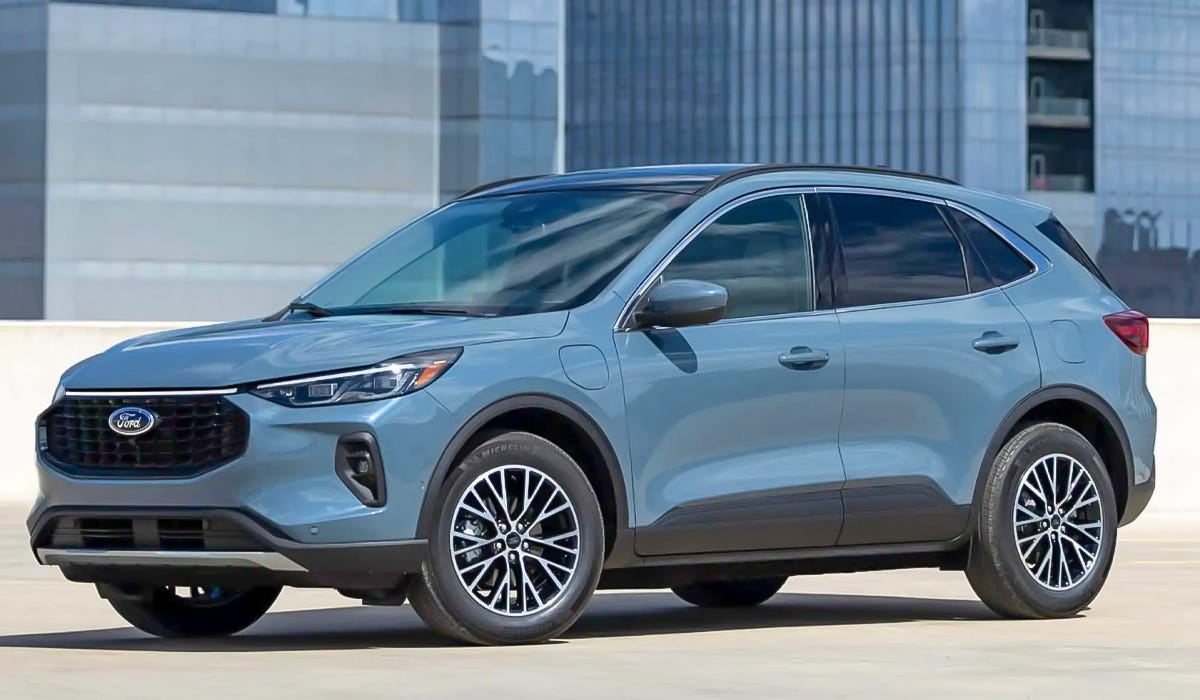
Upper trims offer a panoramic sunroof that extends over both rows, flooding the cabin with natural light and enhancing the perception of space.
The Escape’s interior layout balances practical functionality with modern design. The rotary gear selector frees up valuable space in the center console area compared to traditional shift levers, creating room for larger storage compartments and a more open feel between the front seats.
Storage options are abundant throughout the cabin, including generously sized door pockets, multiple cup holders, and a large center console bin.
Available in conventional gasoline, hybrid, and plug-in hybrid configurations, the Escape maintains consistent interior dimensions across all powertrain options thanks to thoughtful battery packaging in electrified models.
This is particularly notable as many competitors sacrifice interior or cargo space in their hybrid variants. With exterior dimensions of 180.5 inches in length and 74.1 inches in width, the Escape is relatively compact for its segment, yet its interior roominess competes favorably with larger vehicles.
This efficient packaging, combined with the flexibility of its sliding second row, makes the Escape an excellent choice for buyers who prioritize passenger comfort and versatility in a compact footprint.
10. Chevrolet Equinox
The Chevrolet Equinox delivers impressive interior space in a package that emphasizes practical functionality over flashy design. With 103.5 cubic feet of passenger volume, the Equinox provides front occupants with 40.9 inches of legroom and 40.0 inches of headroom, while rear passengers enjoy 39.9 inches of legroom and 38.5 inches of headroom, dimensions that ensure comfort for adults in both rows.
The Equinox offers 29.9 cubic feet of cargo space behind the rear seats, expanding to 63.9 cubic feet with the rear seats folded. While these figures are not class-leading, Chevrolet has designed the cargo area to be highly usable, with a flat load floor, minimal intrusions, and a wide opening.
The rear seats feature a 60/40 split and fold nearly flat with the pull of a lever, creating a versatile space for various cargo configurations. Higher trims include a hands-free power liftgate that can be programmed to open to specific heights.
Chevrolet has focused on creating a cabin that feels open and airy, with a low dashboard and large windows that provide excellent visibility in all directions.

The horizontally oriented dashboard design emphasizes width, while the center stack is angled slightly toward the driver for improved ergonomics without compromising the passenger’s sense of space.
The available panoramic sunroof extends over both rows of seating, dramatically increasing natural light throughout the cabin. The Equinox excels in providing thoughtful storage solutions throughout the interior.
The center console offers a deep bin with customizable dividers, door pockets are generously sized to accommodate larger water bottles, and various smaller compartments are strategically placed for phones, sunglasses, and other everyday items.
Base models include cloth upholstery that is both durable and comfortable, while higher trims offer leather seating surfaces and soft-touch materials in key touch points.
With exterior dimensions of 183.1 inches in length and 72.6 inches in width, the Equinox maintains a relatively compact footprint that facilitates easy maneuvering in urban environments.
Chevrolet’s approach to the Equinox’s interior prioritizes practical comfort over dramatic styling elements, resulting in a cabin that may not immediately impress with flashy features but proves exceptionally functional and comfortable in daily use.
11. Mitsubishi Outlander
The redesigned Mitsubishi Outlander sets itself apart in the compact SUV segment by offering standard three-row seating, a rare feature in this class.
With a passenger volume of 120.1 cubic feet, the Outlander provides front occupants with 41.7 inches of legroom and 40.6 inches of headroom, while second-row passengers enjoy 39.9 inches of legroom and 39.1 inches of headroom. The third row, while best suited for occasional use or children, adds valuable flexibility for families.
Cargo capacity is impressive for a compact SUV with three rows, offering 11.7 cubic feet behind the third row, 33.5 cubic feet with the third row folded, and 79.7 cubic feet with both rear rows folded.
The second-row seats feature a 40/20/40 split, providing more configuration options than the typical 60/40 arrangement found in most competitors. This allows long items to be carried while still accommodating passengers on either side. The third row splits 50/50 and folds flat into the floor when not needed.
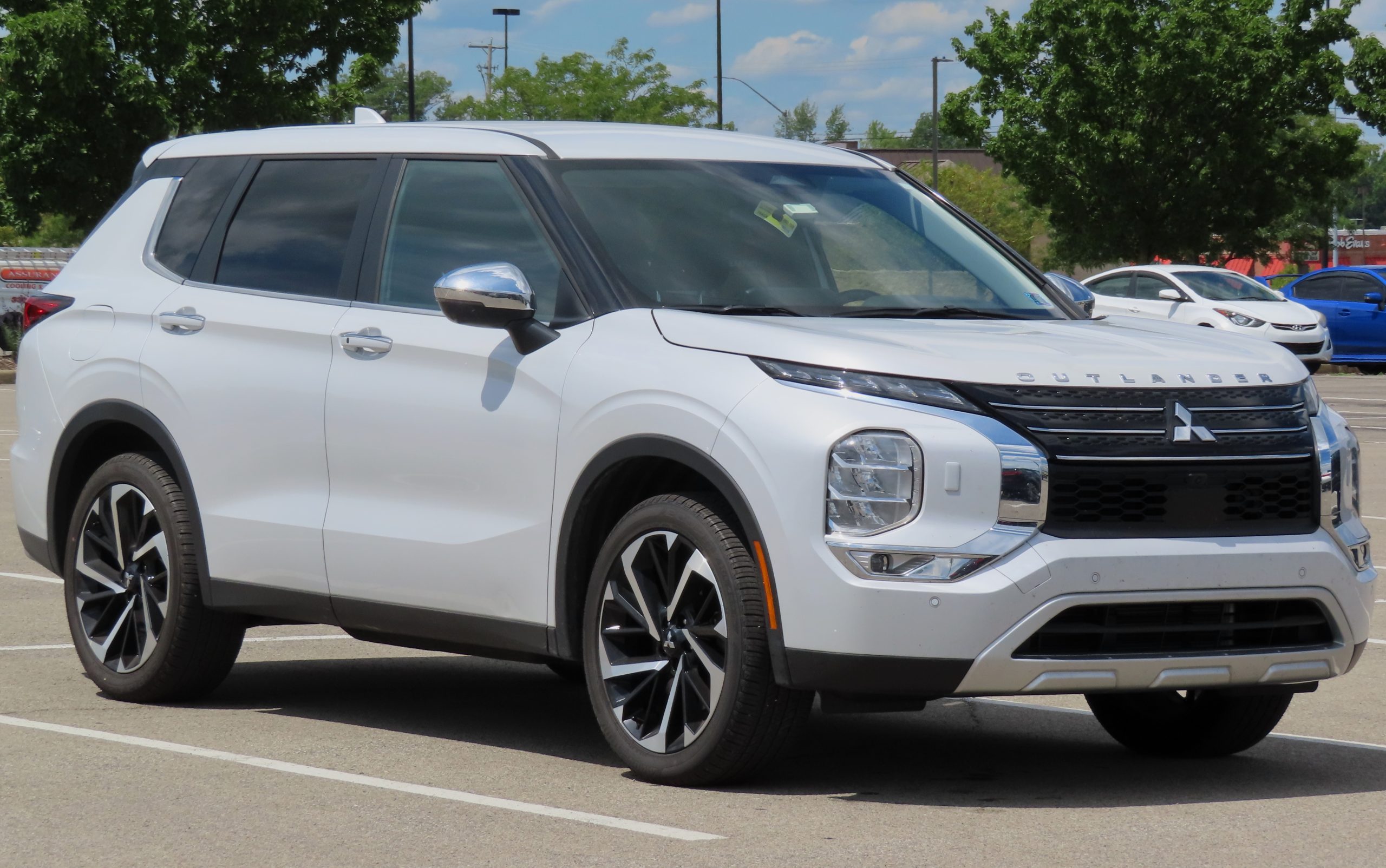
Mitsubishi has designed the Outlander’s interior with an emphasis on premium feel and versatility. The dashboard features a horizontal layout that maximizes the perception of width, while the center console is positioned to provide convenient storage without intruding on passenger space.
Higher trims include semi-aniline leather upholstery, genuine aluminum trim, and a 12.3-inch digital instrument cluster that creates a sophisticated atmosphere uncommon in this price range.
Storage solutions throughout the cabin are abundant and thoughtfully designed. The center console offers a deep bin with customizable dividers, door pockets are generously sized, and various smaller compartments are provided for everyday items.
The available panoramic sunroof extends over the first and second rows, flooding the cabin with natural light and enhancing the sense of spaciousness.
Despite offering three rows of seating, the Outlander maintains relatively compact exterior dimensions, with a length of 185.4 inches and a width of 73.3 inches.
This efficient packaging makes it an excellent option for growing families who need maximum versatility without moving to a larger vehicle class.
The combination of generous passenger accommodations, substantial cargo capacity, and premium interior materials establishes the Outlander as one of the most capable and sophisticated compact SUVs on the market.
12. Jeep Cherokee
The Jeep Cherokee takes a different approach to interior space than many of its competitors, focusing on premium quality and off-road capability rather than maximum volume.
With 98.5 cubic feet of passenger volume, the Cherokee provides front occupants with 41.1 inches of legroom and 39.4 inches of headroom, while rear passengers enjoy 40.3 inches of legroom and 38.5 inches of headroom.
While these figures are slightly more modest than some class leaders, the Cherokee’s seating is exceptionally comfortable, with supportive cushions and quality materials that enhance the perception of space through comfort.
The cargo area offers 25.8 cubic feet behind the rear seats and 54.7 cubic feet with the seats folded. What distinguishes the Cherokee’s cargo area is its flexibility, featuring an adjustable load floor that can be set to different heights to create a flat surface with the folded rear seats or maximize volume.
Higher trims include a hands-free power liftgate and configurable tie-down points that increase the practical utility of the available space.
Jeep has emphasized interior quality in the Cherokee, with soft-touch materials in key touch points and substantial, well-cushioned seats in all positions.
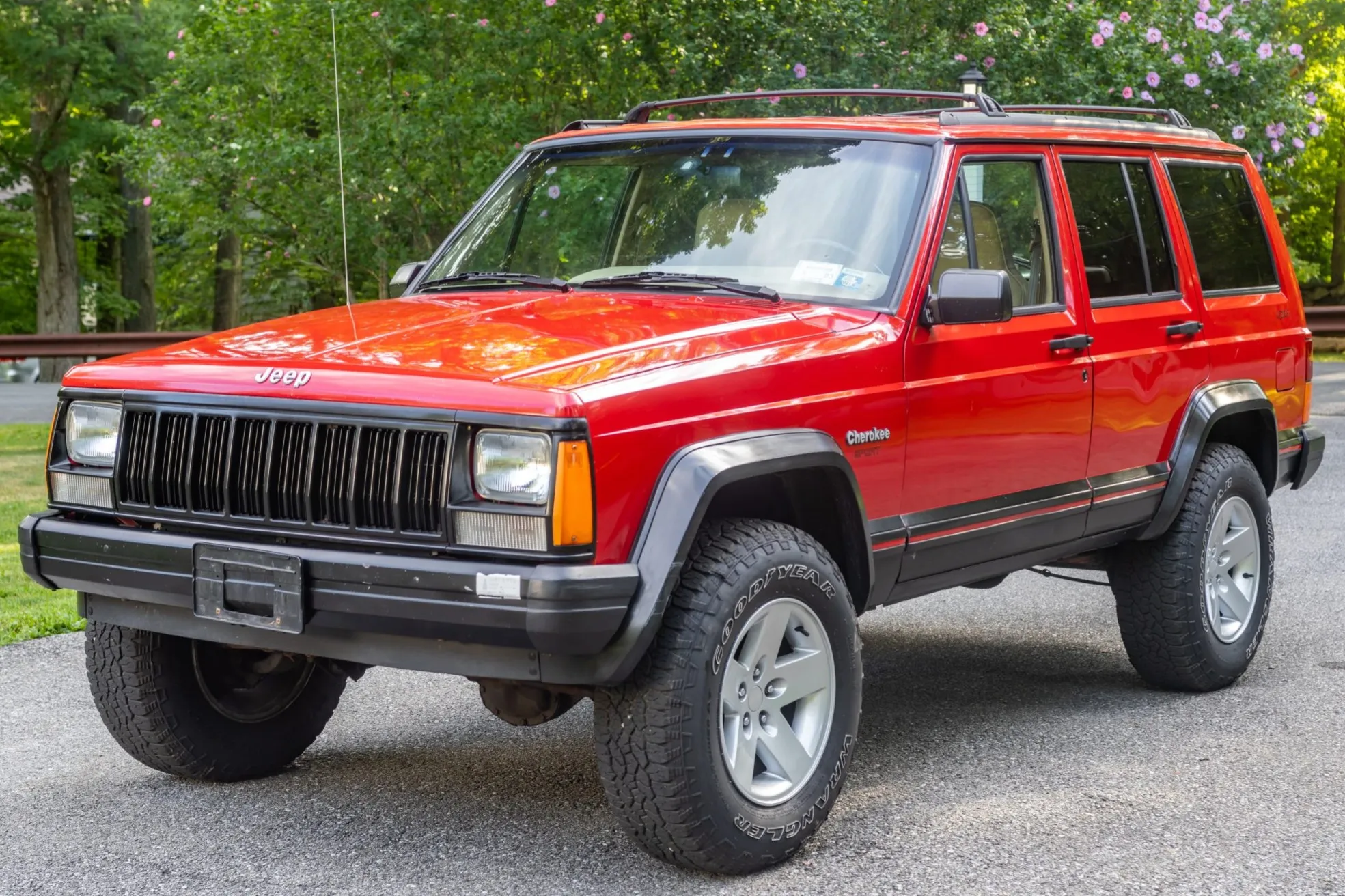
The dashboard layout is driver-focused without compromising passenger comfort, featuring intuitive controls and generous storage options.
Even in off-road-oriented Trailhawk models, which include additional mechanical components for enhanced capability, interior space remains largely uncompromised.
Storage solutions throughout the cabin are thoughtfully designed, including a deep center console bin that can accommodate tablets and larger items, generously sized door pockets, and various smaller compartments for everyday essentials.
The available CommandView dual-pane panoramic sunroof dramatically increases natural light throughout the cabin, enhancing the perception of spaciousness.
While the Cherokee’s numerical measurements may not lead the segment, its approach to interior comfort and quality creates a premium experience that many buyers find more satisfying than raw volume.
With exterior dimensions of 182.9 inches in length and 74.9 inches in width, the Cherokee balances off-road capability, on-road comfort, and interior spaciousness in a way that appeals particularly to buyers who value versatility and refinement over maximum cargo capacity.
Also Read: 10 American Muscle Cars Ideal for Weekend Track Days

